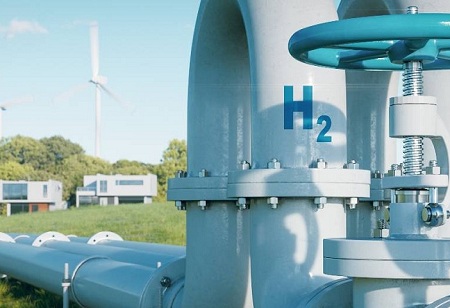India's state-run oil and gas corporations plan to construct a total green hydrogen generation capacity of 38,000 tonnes annually by the following fiscal year. The petroleum ministry's energy transition advisory council estimates that by 2024–2025, the combined electrolyzer capacity for the planned green hydrogen facilities will need to be 279 MW. Hindustan Petroleum intends for its refineries in Visakhapatnam and Barmer to have 115 MW of capacity. While Indian Oil, the country's largest refiner, plans to build a 56 MW capacity at its Mathura and Panipat refineries, gas pipeline operator GAIL is aiming for a capacity of 60 MW. While Numaligarh Refinery and Mangalore Refinery & Petrochemicals aspire for 20 MW and 3
MW capacity, respectively, Bharat Petroleum is aiming for 25 MW. Green hydrogen is a key component of India's energy transition strategy. By investing Rs 8 lakh crore, it hopes to establish green hydrogen production capacity of at least 5 million metric tonnes annually by 2030.
Since they are already a significant producer and user of non-green hydrogen, state-run oil and gas firms are anticipated to play a significant role in the establishment of green hydrogen capacity. The capacity of state-run and private-sector refiners to produce hydrogen is expected to increase by 85% to 2.5 million tonnes annually by 2030 from 1.4 million tonnes annually in 2020. By 2030, Indian Oil is anticipated to have the largest capacity, with 825,000 tonnes annually. Reliance Industries and HPCL are expected to each have annual capacities of 529,000 and 302,000 tonnes, respectively.
Refineries and fertiliser manufacturers in India account for 99% of the nation's entire need for pure hydrogen. According to the committee, India's refineries consume roughly 2.1 million tonnes of hydrogen per year, and the ammonia industry requires about 3.1 million tonnes. Around 20 green hydrogen projects with a total capacity of around 230 GW already exist or have been announced globally. The committee identified several obstacles to expanding the market for green hydrogen, including price, technology maturity, efficiency, renewable electricity, and regulatory ambiguity.
